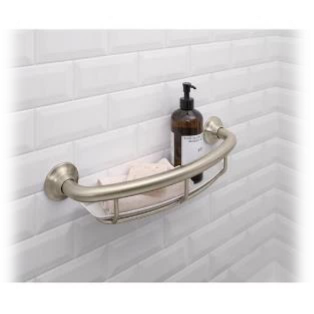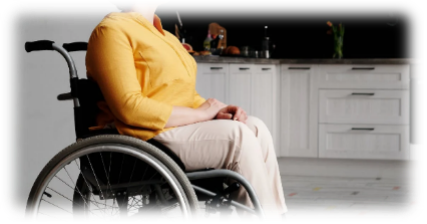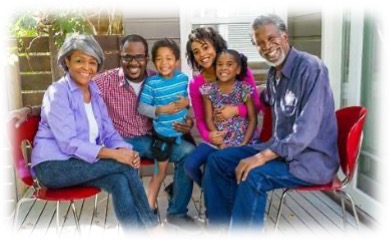Are you considering building a new home, or are you one of the 40% of all US homeowners considering remodeling your existing home in the next two years? Consider for a moment the advantages of embracing Living in Place design options.
While this may sound familiar to the coined phrase Aging in Place, this is a fundamental shift to a simple, complete approach to improving home accessibility. Implementing health and safety features while, creating beautiful, functional environments that improve lives and stimulate independence and dignity. Living in Place focuses on accessible homes for 100% of the population, not just the sixty-five and over group. So much more inclusive than tackling fall prevention, Living in Place addresses the whole family and the length of time your family will call your house, home.
Aging – The Elephant in the Room

In a survey conducted by AARP late last year, 77% of adults aged fifty and over said they want to remain in their homes for the long term. It may be a sensitive topic but as we or the people we love get older, physical changes can make it harder to get around and tend to daily life activities. 1 in 4 adults now 65 will live to 90+, it is important to make plans now if the goal is to stay in the home. Well, thought-out improvements can make everyday tasks more manageable and enjoyable during this phase of life. By remodeling for continued or improved safety and independence, you can help enhance the overall quality of life. Wider hallways, which accommodate walkers and wheelchairs, electrical outlets located higher on the wall, pull-down shelving in upper wall cabinets to avoid using a step stool, main floor laundry, zero-step shower, and wall reinforcements for the addition of bathroom grab bars, are all examples. Speaking of grab bars; did you know bathroom fixtures have come a long way? Decorative and less institutional-looking grab bars are readily available now. In a study conducted by the National Institute on Aging, 80 percent of falls in the home occur in the bathroom of those, and approximately; two-thirds occur during bathing or showering. Added to a remodeled bathroom, grab bars instantly add a level of safety.
You Just Never Know

According to the U.S. Census Bureau, over 40 million Americans are living with a disability. Two million people every year sustain a serious back injury. Of those, 5% will become chronic and disabling. Similarly, in 2019, over 2.5 million people were treated in emergency departments for injuries from motor vehicle crashes. When the unexpected happens, so many considerations occur quickly. The push to make smart, intentional remodeling decisions could make the difference in staying in your current home, after a life-changing injury or illness. Unobstructed access to the home allows a disabled family member to continue their style of living, in the home they love. This can make an enormous difference, to their mental health and overall healing.
Sometimes illness can bring about other changes to the body, which require, life-saving home modifications. Extra smoke detectors with auditory or visual signals, for a blind or deaf family member. Sliding doors, non-slip flooring, or the addition of a doggie door for a newly acquired service dog to name a few.
Multi-generational living

Aesthetics and needs are changing in home design. This could be due to many factors, for one, more people are sharing living space. *From 2011 to 2021, the number of multigenerational households in the U.S. quadrupled, with over one in four adults living in a multigenerational household. More families are experiencing multi-generational living due to family members providing childcare or adult children returning to their parent’s home, or seniors moving in with children to be cared for by family members. “Mother-in-law-suites” or “granny flats” or accessory dwelling units (ADU) are appearing on municipal zoning meeting agendas in greater numbers than ever before. This type of space can come in various design forms, garage conversion, attic, basement conversion, or as a stand-alone structure. Hugely popular in other countries, the US has moved slowly in making these commonplace. Conversely, if you own a two-story house, could you remodel it now, in a way that the main floor and the second floor could become two complete living spaces? Proactively planning for a family member or outside caretaker to move in, could extend years to the option of remaining in your home. Maintaining private living arrangements while having trustworthy assistance close by, 24/7, and is less scrutinized legally than the ADU.
Straightforward design changes can provide a standard house with great safety features, which do not forfeit style; zero-step entrance from the garage or front door, pocket doors or sliding barn doors, and solid surface floors vs. carpeting. Currently, more than 40 percent of new homes have a main floor bedroom suite, a 15-percent increase over a decade ago, according to the NAHB. As baby boomers enter and continue to enjoy retirement, home modifications centered around staying mobile and, independent continues to be the crux for many home renovations.
Of course, choosing to live a healthy lifestyle could be discussed here. Eating right, not smoking, and limiting other toxins could increase your ability to live a healthy, long life. Location can present key factors too. Sidewalks and green spaces that encourage walking, and public transit are located nearby; in case driving is no longer an option. Access to activities and social gatherings is extremely critical as we age. Remaining in contact with friends and family will do wonders for an aging mind and body.
Discussing the future does not have to be frightening. Securing a plan allows one to rest in the knowledge that things will be taken care of later. When the time comes and more accessibility is necessary, you will be ahead of the game. Plan a family meeting to determine steps now, for down the road. Is one family member’s home better suited for Living in Place? Are there neighborhood or school locales or, other aspects to be considered?
Finally, remaining at home may be the only option. Senior living communities can be prohibitive due to cost. Independent living facilities can easily run $1700 – $2,520 per month while, assisted living facilities can range from $4000 – $6300 per month. That amount of money could pay for a heap of home renovations.
Regardless of possible, restrictive health circumstances, one may face, there is no need to lose independence, or the ability to enjoy life. If you need home remodeling done for Living in Place, call us. Home Studio by Omega 616-538-2900
“The best preparation for tomorrow is doing your best today”
– H. Jackson Brown, Jr.
*Real Estate Witch article April 2022
Moen 16″ x 1″ Grab Bar with Integrated Shelf from the Home Care Collection